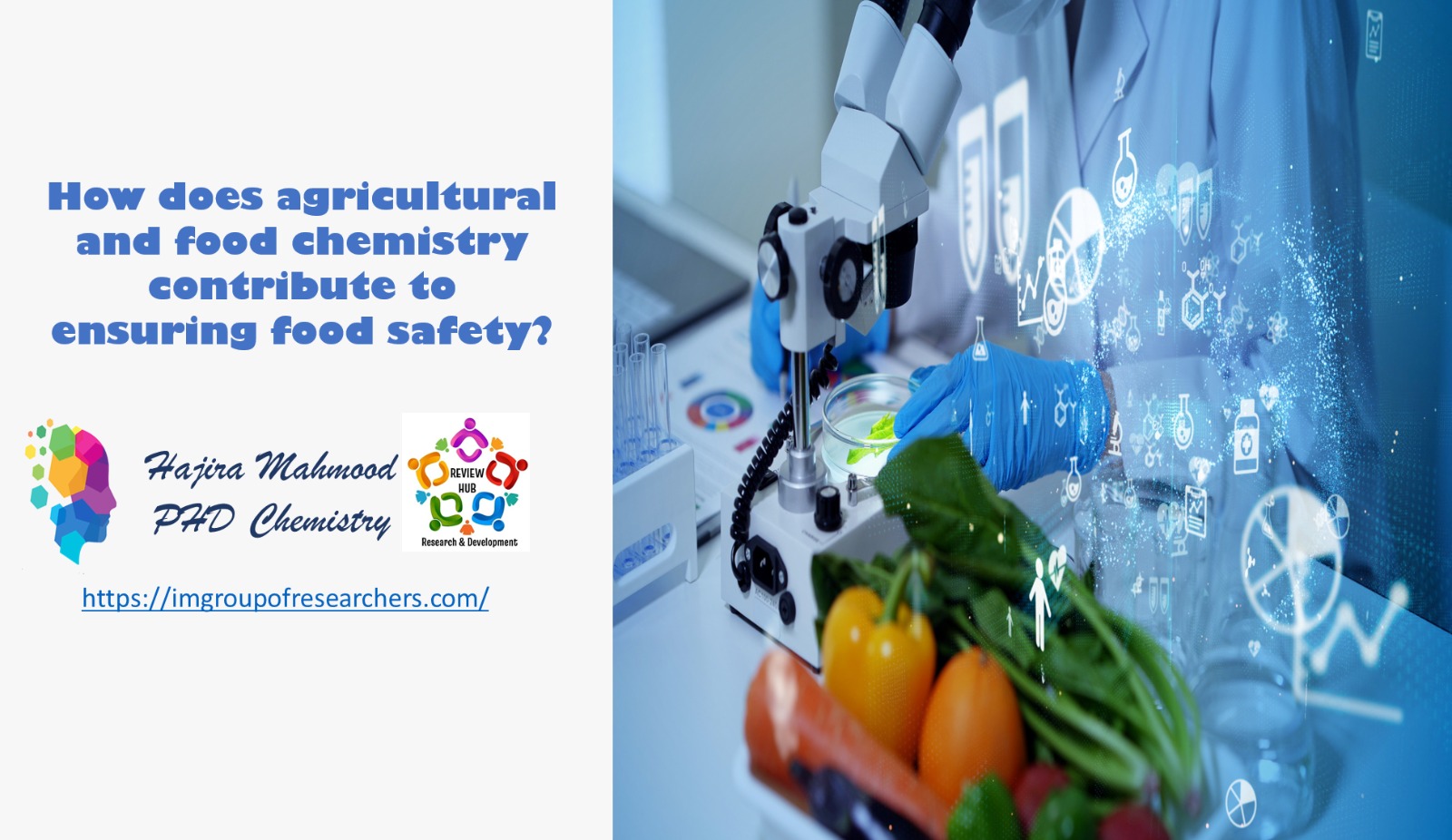How does Agricultural and Food Chemistry Contribute to Ensure Food Safety?. Agricultural and Food Chemistry is a field of study that focuses on the chemistry of agricultural products, food ingredients, and food processing. It involves the study of the chemical composition, properties, and interactions of agricultural materials and food components. This field plays a crucial role in ensuring the safety, quality, and nutritional value of food products. It also involves research on improving agricultural practices, developing new food products, and finding solutions to challenges in food production and processing.
Author: Hajira Mahmood
Agricultural and food chemistry plays a critical role in ensuring food safety by analyzing the chemical composition of foods and agricultural products, identifying potential hazards, and developing methods to prevent or minimize contamination. This includes testing for pesticides, antibiotics, mycotoxins, and other harmful substances that could be present in food products.
Food chemists also develop new technologies and processes to control and prevent bacterial, viral, and fungal foodborne pathogens. They also study the chemistry of food preservation techniques such as canning, freezing, and irradiation to ensure that they are effective and safe.
Furthermore, food chemistry research provides an understanding of the nutritional value of food, which enables the development of food products that are not only safe but also provide the necessary nutrients required for a healthy diet. In summary, agricultural and food chemistry plays a vital role in ensuring that our food is safe, nutritious, and of high quality.
How do Food Chemists Test for Pesticides and Other Potential Contaminants in Agricultural Products?
Food chemists employ various techniques to test for pesticides and other potential contaminants in agricultural products. Some common methods include:
1. Sample Extraction
Chemists extract samples from agricultural products using solvents or other relevant extraction methods. This process helps to isolate the contaminants from the food matrix.
2. Chromatography
Chromatographic techniques like gas chromatography and liquid chromatography are widely used to separate and identify pesticides and contaminants in samples. These techniques rely on the different physical and chemical properties of compounds to separate them.
3. Mass Spectrometry
Mass spectrometry is often coupled with chromatography to analyze and quantify pesticides and contaminants. Mass spectrometry provides information about the molecular composition and structure of the compounds present in the sample.
4. Immunoassays
Immunoassays, such as enzyme-linked immunosorbent assays, are also used to detect and quantify specific contaminants or pesticides. These tests rely on the specific binding of antibodies to target compounds.
5. Polymerase Chain Reaction
PCR-based techniques are employed to detect and identify genetically modified organisms or the presence of specific DNA sequences in agricultural products.
6. Atomic Absorption Spectroscopy and Inductively Coupled Plasma Mass Spectrometry:
These techniques are used to measure the levels of heavy metals, such as lead, arsenic, and mercury, in agricultural products.
By utilizing these and other analytical techniques, food chemists can effectively detect, monitor, and quantify pesticides and potential contaminants, ensuring the safety and quality of agricultural products.
Follow Us on

